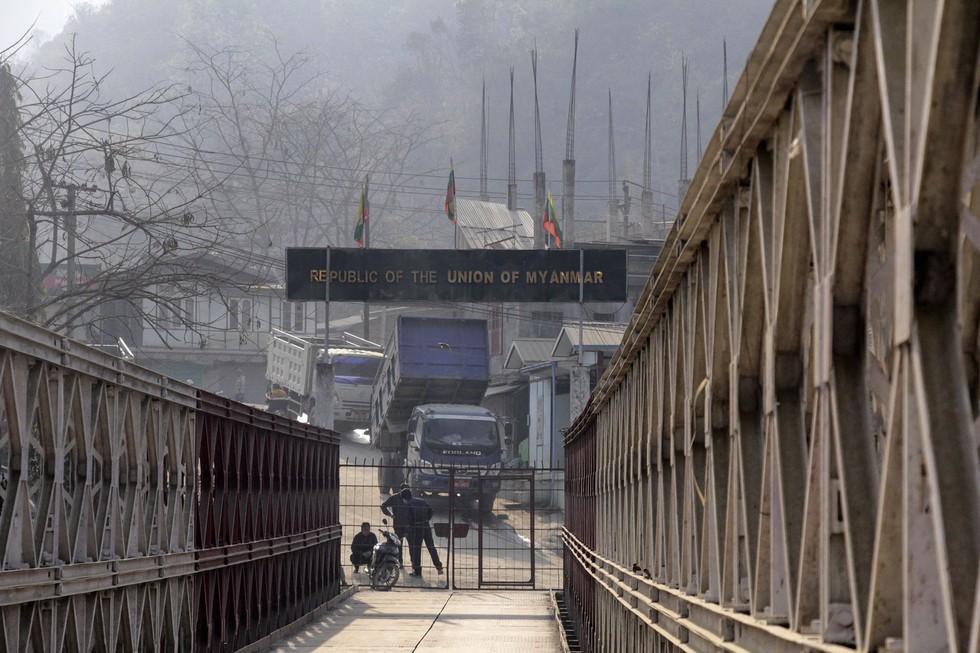At a passing out parade of the Assam police commandos in Guwahati on January 20, Home Minister Amit Shah made significant announcements regarding the India-Myanmar border and the Free Movement Regime (FMR) agreement.
Fencing the India-Myanmar Border
Home Minister Amit Shah declared plans to fence the 1,643 km India-Myanmar border, citing security concerns and the need to regulate cross-border movements.
Reconsideration of Free Movement Regime (FMR) Agreement
Amit Shah mentioned the reconsideration of the FMR agreement with Myanmar to prevent border residents from moving into each other’s country without proper documentation. The FMR, established in 2018, allowed border residents to travel up to 16 km inside each other’s country without a visa.
Historical Context of the India-Myanmar Border
Much of India’s northeast was once under Burmese occupation until the Treaty of Yandaboo in 1826, leading to the current boundary alignment. The border division impacted people of the same ethnicity and culture, particularly the Nagas and Kuki-Chin-Mizo communities.
Security Concerns and Extremist Activities
A significant portion of the India-Myanmar border remains unfenced, facilitating the activities of extremist groups operating from clandestine bases in Myanmar. The porous border has been exploited for drug trafficking and wildlife smuggling.
Trigger for FMR Reconsideration
The conflict between the Meitei and Kuki-Zo communities in Manipur in May 2023 prompted a rethink on the FMR. Manipur Chief Minister blamed the ethnic violence on the influx of Myanmar nationals, leading to the suspension of FMR during the COVID-19 lockdown.
Civil War in Myanmar and Refugee Influx
The civil war in Myanmar led to an increase in refugees seeking shelter in India. Manipur pushed back thousands of Myanmar nationals in 2022 and 2023, while Mizoram accommodated displaced individuals with ethnic affiliations.
State Reactions
Mizoram Chief Minister opposed the Centre’s decision to fence the border and end the FMR, emphasizing ethnic ties. The Nagaland Students’ Federation condemned the move, stating that the territories belong to the Nagas.
Conclusion
The proposed fencing of the India-Myanmar border and the reconsideration of the FMR agreement have raised concerns related to security, historical ties, and regional conflicts.
Multiple-Choice Questions (MCQs) with Answers:
What did Home Minister Amit Shah announce at the passing out parade in Guwahati?
- a) Fencing the India-Myanmar border
- b) Opening the border for free movement
- c) Establishing a new trade agreement
- d) None of the above
- Answer: a) Fencing the India-Myanmar border
When was the Free Movement Regime (FMR) agreement with Myanmar established?
- a) 2016
- b) 2018
- c) 2020
- d) 2022
- Answer: b) 2018
What was the historical event that led to the current alignment of the India-Myanmar border?
- a) Treaty of Nagaland
- b) Treaty of Yandaboo
- c) Treaty of Guwahati
- d) Treaty of Manipur
- Answer: b) Treaty of Yandaboo
What triggered the reconsideration of the Free Movement Regime (FMR) agreement?
- a) Rohingya refugee crisis
- b) Conflict between Meitei and Kuki-Zo communities
- c) Military coup in Myanmar
- d) COVID-19 lockdown
- Answer: b) Conflict between Meitei and Kuki-Zo communities
Which state accommodated displaced individuals from Myanmar based on their ethnic affiliations?
- a) Assam
- b) Manipur
- c) Mizoram
- d) Nagaland
- Answer: c) Mizoram
